Крымский полуостров всегда имел особое значение для русского народа. За владение Крымом неоднократно проливалась кровь.
События Крымской войны 1850х не сходили с первых полос крупнейших мировых газет. Впервые в мировой истории на полях сражений появляются сестры милосердия. И, одним из немногих положительных последствий войны, называется возникновение сестричества – неотложной помощи раненым. Однако мировой общественностью первенство в этом отдается профессиональной английской медсестре Флоренс Найтингейл. Русские учебники истории упоминают простую севастопольскую девушку Дашу и множество известных и благородных русских фамилий.
Целью данной работы является изучение исторических материалов, как русских, так и британских для выяснения исторической правды. За основу взяты биографические данные двух исторических личностей – Флоренс Найтингейл и Дарьи Лаврентьевны Михайловой. В работе также дается анализ составляющие военных потерь русской и британской армии для сравнения качества работы медслужб двух стран.
Результаты исследования позволяют с исторической достоверностью утверждать, что Россия является родиной сестринского дела, а Дарья Михайлова впервые в истории войн оказывала медицинскую помощь раненным на поле боя. Дамы высшего общества России считали своим долгом участвовать в делах милосердия в отличие от высшего света Британии.
The Crimean Peninsula has always been an important place for Russia because of its geographical position. That’s why there were a lot of battles on it so it was the Crimean War. We have learnt in our History classes that the war was part of a long-running contest between the major European powers for influence over territories of the declining Ottoman Empire. The Crimean War as a whole took the lives of over 500,000 before the Treaty of Paris was signed in 1856. The Crimean War is known as one of the bloodiest wars of XIX century, the mother of all contemporary wars as they called it. It saw the first military use of many innovations, such as armoured warships, the intercontinental electric telegraph, submarine mines and war photography. We also have read about our famous surgeon N.I. Pirogov and Dasha Sevastopolskaya.
It was the first time in the history of Russia that the first aid was given in the field during a battle. But on the other hand nowadays Florence Nightingale is broadly acknowledged and revered as the pioneer of modern nursing. It is said Florence Nightingale laid the foundations of professional nursing during the Crimean War. Moreover the annual International Nurses Day is celebrated around the world on her birthday on 12 May. Why it happened that way? What did Russian women contribute to nursing services?
That’s why the object of our research work is nursing during the Crimean War.
To achieve the purpose we will have to cope with some tasks:
- To examine a life and activity of two historic personalities – Florence Nightingale on one side and Dasha Sevastopolskaya on the other side;
- To analyze and compare work of British and Russian nurses;
- To find out who was the first military nurse.
Methods of research intended for use:
– The method of study of documents; The usage of the Internet;
– The analyzing of statistics.
The Crimean War: step by step
Why was the Crimean War fought?
The Crimean war was the war conflict between Russian Empire on one side and Allied forces of British, French, Ottoman Empires and Sardinia Kingdom on another. In Russia, this war is also known as the Eastern War, and in Britain, it is sometimes called the Russian War.
The reason for the Crimean war was Turkey’s refusal to meet Russian Tsar’s demands that the Orthodox clergy in Palestine be restored and that the Russian Tsar to be allowed to support Orthodox Christians living in Turkey. Britain and France feared a potential Russian dominance in the Middle East. Turkey declared war on Russia on October 5, 1853. The number of the countries involved in the conflict, massive war casualties, and remote territories of battlefields made the Crimean War known as one of the bloodiest wars of XIX century, the mother of all contemporary wars as they called it.
The beginning of the Crimean campaign
The Crimean campaign opened in September 1854 [8]. 360 ships sailed in seven columns, each steamer towing two sailing ships. Anchoring on 13 September in the bay of Eupatoria 500 marines landed to occupy it. It took another four days to land all the stores, equipment, horses and artillery. The landing was north of Sevastopol, so the Russians had arrayed their army in expectation of a direct attack. The Allies advanced and on the morning of 20 September came up to the Alma River and the whole Russian army. This place is located on about 40 km from Sevastopol, not far from Vilino village. Here one of the major battles of the Crimean War took place. The British and French Navy, consisting of 89 battleships and 300 carriers with troops approached the peninsula shores. A 62-thousand army headed for the major Russian Navy base – Sevastopol. The Russian Army of 33,000 soldiers and officers took their stand on the high left-hand bank of the Alma River. The battle lasted for 12 hours. Both sides suffered huge losses. Under the pressure of exceeding in number, much better armed forces the Russian troops had to retreat to Sevastopol. Failing to pursue the retreating forces was one of many strategic errors made during the war, and the Russians themselves noted that had they pressed south that day they would have easily captured Sevastopol. Instead, it took nearly a year for the siege to end.
The news media in Britain
In November 1854, the weather turned from mild autumn to winter. On 14 November 1854 the Great Hurricane struck, destroying much shipping in the two bases and tearing away the tents in which the troops had been living. 21 ships were wrecked in Balaclava, containing the stores needed for survival through the winter and to conduct the siege. In the evening, it began to snow. The public back home in Britain were more engaged and informed in this war due to the work of what we now call the news media, in the written reports and photographs of combat submitted by journalists such as William Russell (for The Times newspaper) [13] and Roger Fenton. So it was usual to read such remarks in newspapers and magazines. -Well, Jack! Here’s good news from home. We are to have a dal!
– That is very kind. Maybe one of these days we will have a coat to stick on it! Over the winter, lack of proper supply systems brought the British Army in the Crimea to the brink of starvation. Huge numbers fell sick and the horses and mules died in droves. Newspaper reports from the front line told horror stories of the appalling conditions in British army hospitals.
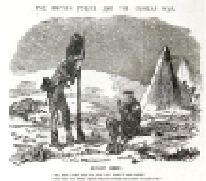
Siege of Sevastopol
Sevastopol was home to the Tsar’s Black Sea Fleet, which was a threat on the Mediterranean Sea, as well as on the Black Sea. Since its founding in 1783, the port city of Sevastopol has played a crucial role in Russian history. In1853 the population of the city was 45,000 and there were about 2,500 buildings in it [3].
The first order of defense for the port city was to begin scuttling ships to make the harbor unnavigable [12]. About 15 ships were sent to the bottom of the sea. Their armaments were removed before the intentional sinkings and the crews were then available to fight elsewhere. As the sides lined up in October 1854, the Allies had about 120 guns while the Russians had about 350. At 6.30am on 17th October 1854 the Allies began the bombardment of Sevastopol [14]. The Russians were able to hold off the French and British troops who had hoped to land and carry out an infantry attack that they assumed would lead to a quick victory.
At 3pm on 6th June 1855, a heavy bombardment opened. The French batteries on Mount Inkerman fired on the Malakoff. The British fired on the Malakoff and the Redan. 540 guns fired from each side. Losses in the bombardment and assault were: French 3,500, English 1,500 and Russian 5,400. Of the six Allied commanders in the attack four were killed and one severely wounded. During the bombardment in early June 1855 the Russian garrison in Sevastopol lost 1,000 to 1,500 men a day [2].
The Panorama Museum
There is the Panorama Museum at Mount Sapun in Sevastopol. That’s the 5,000 sq. feet monumental painting of the beautiful panorama of the fighting at the Seven Bastions the defense of Sevastopol and at the Balaklava Valley. The panorama of the siege of Sevastopol in 1854-1855 tells the story about the 349-days heroic repelling the enemy’s storm. The author of this panorama is the founder of Russian panoramic art, Francis Rubo (1856-1928), the professor of a class of battle painting in the Saint-Petersburg Academy of Arts [10]. By the author’s message spectators, find themselves in the Malakoff barrow in the morning of June 6, 1855, in the day of the storm. The English and French armies stormed the town exactly in that day. Eight English and French divisions with the total strength of 43,000 people attacked Sevastopol fortifications defensed by 23,000 of Russian soldiers.

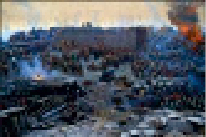

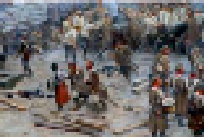
A girl with a yoke is Daria Sevastopolskaya, one of the most famous characters during the siege of Sevastopol. The city was ruined. The Russians abandoned the city four days after the Allies began their sixth and most aggressive bombardment. On September 9, 1855, the Siege of Sevastopol ended.
Russian nurses
Everyone from the ordinary soldiers and nurses on the battlefields to the women and children in towns under siege suffered from wounds and illnesses, lack of food. However, there were people who helped others to survive. They were people of charity, nurses. Let us pay attention on them.
Daria Sevastopolskaya
In spite of Daria Sevastopolskaya’s celebrity, it was difficult to find out correct and detailed information about her [5]. Dasha was born in Sukhaya Balka the suburb of Sevastopol in 1836. Dasha’s father was Lavrenty Mikhaylov, a sailor of Russian Navy. Her mother was a laundress as lots of sailors’ wives that time and died when Dasha was a child. At the age of 13, the girl became a laundress as her mother and led a hard working life. But in 1854, the Crimean War broke out. The Allies advanced and on the morning of 20 September came up to the Alma River and met the Russian army. Here one of the major battles of the Crimean War took place. The battle lasted for 12 hours. Losses in the battle were 3,353 for the Allies and 5,709 for the Russians. There was Dasha’s father among them. She became an orphan.
But suddenly for her neighbours one day the orphan sold out her house and all other properties to buy a horse, a carriage, many quilts, white materials and bottles of vinegar and wine. Dasha had cut her hair, had dressed as a sailor and went to the river Alma. In fact Dasha only decided to come to the front and help soldiers. She became the first military nurse. It was the first time in the history of Russia that the first aid was given in the field during a battle.
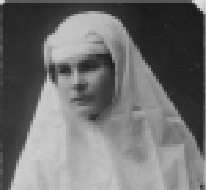
She was not along. Many Russian women helped solders bringing water, kvas and food, caring for the sick and wounded Russian officers and soldiers. In those days Russia came to know about the civic feat of Daria Sevastopolskaya. On November 16, 1854 Tsar Nickolay I awarded Daria Mikhaylova with a gold medal ‘For zeal’ and 500 silver rubles. Nickolay and Mikhail Romanov gave themselves the award to her.
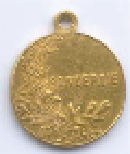
After arriving N.I. Pirogov in Sevastopol Dasha began working with him and other nurses at hospitals. Wounded and sick soldiers were so many that each nurse had to care of 200 of them. Women of the city worked all day long. They cooked food, brought water and kvas, cleaned and washed. The most remarkable were Dariya Tkach, Elena Kucherova, Varvara Velizheva and Efrosiniya Prokofyeva. After the war, she lived in Sevastopol died in 1910.
Nowadays there are three monuments to her in Sevastopol and Dnepropetrovsk and a medal after her. She went down in our history as the first sister of charity.
As we have learnt, Daria Mikhaylova worked with other nurses at hospital. Who were they? We could find out a lot about them.
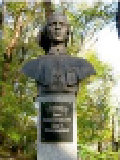
The ‘minister of charity’
In the early 17th century Peter the Great set up hospitals for invalids and the elderly, orphanages for illegitimate children and help solders [17]. By the 1763 decree of Empress Catherina the Great founding homes were created in Moscow (1767) and St. Petersburg (1772). 19th century witnesses the boost in charitable activities, traditionally headed by the members of royal family. In 1803 Russian Empress Maria Feodorovna, the second wife of Tsar Paul of Russia organized the Compassionate Widows of Moscow and St. Petersburg’s Widow Houses. In 1814 she was called the ‘minister of charity’. The Great Duchess Elena Pavlovna established and organized the Krestovozdvizhenskaya Commune of Nurses and became its patroness in 1854 [4]. This community was the first one of mercy to take care for the wounded at the battlefield and military hospitals.
The sisters of charity in Sevastopol
In September 1854, when thousands of the wounded died in Sevastopol N.I. Pirogov [9] forwarded a petition to send him to the theatre of the war. With a group of other medical doctors, Pirogov and 120 nurses arrived in Sevastopol on 9 November 1854. Among them, there were a lot of noble women such as Khitrova E., Bakunina E., Kutuzova M., Shedrina B.E. Their work in Sevastopol saved many lives.
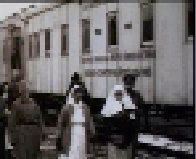
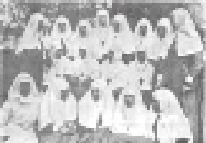
The sisters of charity. Sevastopol, 1854-1855
Pirogov‘s activity was directed to help to the wounded people. Nicolay Pirogov became a hero of medicine in Sevastopol. During the siege of Sevastopol Pirogov introduced the mass use of anaesthetic in surgical operations on the front line. Thousands of defenders of the city repeated his name with gratitude. Pirogov‘s the most important merits are: the sorting of the wounded and sick according to the character and location of the wound; introduction of the statute of nurses and organization of their work and help to the wounded and sick. His great ability to do observations and his possibility to do an undeniable conclusion that «Not a medicine, but an administration plays the main role in the business of help to the wounded and sick on the theatre of war» [15].

The total number of Russian nurses who worked in the hospitals and at bandage posts in Sevastopol, Kherson, Simferopol and many other places is still disputable. The list of the main group of nurses – the nurses of St. Petersburg’s Krestovozdvizhenskaya Commune – includes 236 names. The list of the smaller group – the Compassionate Widows of Moscow and St. Petersburg’s Widow Houses – contains 91 names. Yet, there were some other women – officers’ wives and local residents, who voluntarily joined the above-mentioned communes or just came to work in hospitals as nurses, servants, or sitters, striving to alleviate the sufferings of the wounded soldiers.
According to the research made by the Russian historian Valeriy Durov, Russian government stamped out 7 gold medals and 1450 silver medals to award women who had worked in the hospitals during the Crimean War. This fact may be regarded as indirect evidence that the total number of women who worked in different places in Crimea during the war exceeded one thousand. However, even taking into consideration the nurses sent from St. Petersburg and Moscow, whose names are listed in the documents found in Russian State Historical Archive and St. Petersburg’s City Archive, one can come to conclusion that by the end of the Crimean war, Russia had had at least 327 experienced and skilled nurses. This is approximately ten times more than the number of nurses worked for the British hospitals in Turkey.
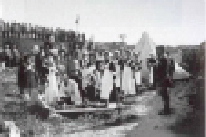
Doctors who had worked in the Crimean hospitals highly praised nurses’ activity and paid tributes to their selflessness, indefatigable labor, and sympathetic attitude to the sick and wounded warriors. Compassionate nurses of the Krestovozdvizhenskaya Commune of Nurses must be regarded as medical ranks. To take care of the wounded, to inspire the sufferers with the hope of recovery, to say prayers, to suffer and rejoice with them – all this was only possible for the women with the highest sense of responsibility. In short, the compassionate nurses were the best helpers for the doctors and they were truly the best friends and patronesses for the patients [1].
Leo Tolstoy wrote a few short sketches on the Siege of Sevastopol, collected in The Sevastopol Sketches. After the Crimean war new communes of nurses were set up in St. Petersburg, Moscow and many other different cities all over the Russian Empire. The work of the Krestovozdvizhenskaya Commune of Nurses and other nurses during the Crimean War set an example of the noble impulse and devoted labor and it also shown a possibility of a career for women. The nobility and some of the members of the Tsar family provided support for the nursing communes and even attempted to gain the employee status for nurses in hospitals.
To summarize all these facts we can state
1. Daria Lavrentyevna Mikhaylova (Daria Sevastopolskaya) was the first sister of charity; not a military nurse who helped wounded soldiers on the battlefield.
2. Founding homes and hospitals were created in the 17th century in Russia.
3. The Krestovozdvizhenskaya Commune of Nurses was organized in 1854 for helping wounded soldiers. The sisters of charity were skilled nurses. There were lots of famous and noble women among them.
4. The number of nurses that had worked in the Crimean hospitals was about 330. They had the highest spirit of selflessness, compassion and humanity and had to care for 200 persons each.
5. The Russian medical doctor and scientist Nikolay Ivanovich Pirogov is considered to be the founder of field surgery, and was one of the first surgeons in Europe to use ether as an anaesthetic.
6. Russian government awarded 7 gold medals and 1450 silver medals to women who had worked in the hospitals during the Crimean War.
Florence Nightingale
In contrast of our first sister of charity Dasha Sevastopolskaya we can find a lot of information about a world known British nurse Florence Nightingale. Examining her biography can help us understand historic events [10, 11].
Florence’s father was William Shore Nightingale, a wealthy landowner who had inherited two estates—one at Lea Hurst, Derbyshire, and the other in Hampshire, Embley Park. Her mother, Frances Nightingale, hailed from a family of merchants. By the time she was 16 years old, it was clear to her that nursing was her calling. When Nightingale was 17 years old, she refused a marriage proposal from a «suitable» gentleman, Richard Monckton Milnes. Despite her parents’ objections, in 1844, Nightingale enrolled as a nursing student at the Lutheran Hospital of Pastor Fliedner in Germany.
In the early 1850s, Nightingale returned to London, where she took a nursing job in a Middlesex hospital for ailing governesses. In October 1853, the Crimean War broke out. Thousands of British soldiers were sent to the Black Sea. Much of the fighting occurred in the Crimea, on the Black Sea. The British wounded were transported 300 miles across the sea to Scutari (now Uskudar), just outside of what is now Istanbul, Turkey. At the time, there were no female nurses stationed at hospitals in the Crimea. The poor reputation of past female nurses had led the war office to avoid hiring more. But, after the Battle of Alma, England was in an uproar about the neglect of their ill and injured soldiers, who not only lacked sufficient medical attention due to hospitals being horribly understaffed, but also languished in appallingly unsanitary and inhumane conditions.
Florence had already planned to travel to the Crimea when, in October, the Secretary of War, Sir Sidney Herbert, asked her to gather a group of nurses to care for the wounded at the military hospital in Scutari.
On November 4 1854, she arrived with 37 other nurses at the Barracks Hospital, a huge, quadrangular building with sides nearly a quarter mile long.
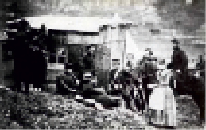
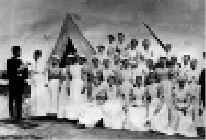
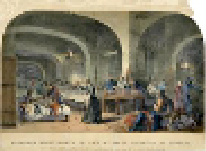
When she arrived, the Barrack Hospital was filthy – the floor was an inch thick with faeces. Approximately 18,000 wounded and dying men lay in rooms and lined the corridors. The conditions in the hospital were deplorable. The men were kept in rooms without blankets or decent food. Florence Nightingale found the conditions in the army hospital in Scutari appalling. In these conditions, it was not surprising that in army hospitals, war wounds only accounted for one death in six. Diseases such as typhus, cholera and dysentery were the main reasons why the death-rate was so high amongst wounded soldiers. She set her nurses to work cleaning the hospital and ensured soldiers were properly fed and clothed. The regular troops were, for the first time, being treated with decency and respect.
Florence Nightingale received very little help from the military until she used her contacts at ‘The Times’ to report details of the way that the British Army treated its wounded soldiers. John Delane, the editor of newspaper took up her cause, and after a great deal of publicity, Nightingale was given the task of organizing the barracks hospital after the battle of Inkerman and by improving the quality of the sanitation she was able to dramatically reduce the death-rate of her patients. During the next 21 months, Florence worked to improve conditions in the hospital. She and her nurses bathed the soldiers, washed their linens, and fed them more substantial food. She eventually established a separate kitchen with her own money to prepare easily digested food for patients. She secured a source of clean drinking water and improved overall sanitary conditions. She set up a system for receiving patients, the basis of modern triage. The mortality rate declined 2 % because of her efforts. She personally attended to countless men, many on their deathbeds.
Edward T. Cook, the author of The Life of Florence Nightingale (1913), quoted one of the men in the hospital that she treated: «Florence Nightingale is a ministering angel without any exaggeration in these hospitals, and as her slender form glides quietly along each corridor, every poor fellow’s face softens with gratitude at the sight of her. When all the medical officers have retired for the night and silence and darkness have settled down upon those miles of prostrate sick, she may be observed alone, with a little lamp in her hand, making her solitary rounds.»
She made so many endless rounds, carrying a lamp with her in the late hours of the night, that she became known as the «Lady with the Lamp», a nickname that was published in an account of her work in The London Times.
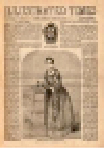
Florence pictured on the front page of the Illustrated Times in 1856.
Florence Nightingale became national heroine, although her work was essentially hospital management, while Mary Seacole combined a profitable canteen business in the Crimean with combat nursing. By 1856, Britain cared about the health of its soldiers and Florence Nightingale continued to campaign tirelessly to improve their conditions. The Queen rewarded Nightingale’s work by presenting her with an engraved brooch that came to be known as the «Nightingale Jewel» and by granting her a prize of ?250,000 from the British government.
In September 1856, she met with Queen Victoria and Prince Albert at Balmoral to discuss improvements that should be made to the military hospital system.
To spread her opinions on reform, Florence Nightingale published two books, Notes on Hospital (1859) and Notes on Nursing (1859). With the support of wealthy friends and John Delane at The Times, Nightingale was able to raise ?59,000 to improve the quality of nursing. In 1860, she used this money to found the Nightingale School & Home for Nurses at St. Thomas’s Hospital. Queen Victoria awarded her the Royal Red Cross in 1883. She was appointed a Lady of Grace of the Order of St John in 1904 and became the first woman to be awarded the Order of Merit in 1907. She was given the Honorary Freedom of the City of London in 1908. On May 10, 1910 she was presented with the badge of honor of the Norwegian Red Cross Society.
She died unexpectedly on August 13 1910, at her home in London. There is the Florence Nightingale museum at St. Thomas’s Hospital, 2 Lambeth Palace Road, London. The annual International Nurses Day is celebrated around the world on her birthday.
Eager to follow her example, even women from the wealthy upper class started enrolling at the training school. Thanks to Nightingale, nursing was no longer frowned upon by the upper class. It had, in fact, come to be viewed as an honorable vocation.

A memorial statue to commemorate Florence Nightingale
To sum up our research we found out that
1. In 1854 Florence Nightingale was a skilled nurse with 10 years’ experience.
2. She arrived at the Barracks Hospital in Scutari Turkey on November 4, 1854.
3. All in all there were only 38 British nurses at hospitals. The upper class didn’t take part in nursing during the war considering it impossible for them.
4. Florence worked to improve conditions in the hospital.
5. Florence got her nickname the «Lady with the Lamp» because of mass media.
6. After the Crimean war, she went on her activity to improve the quality of nursing in Britain, published two books, and used all her money to found the Nightingale School & Home for Nurses at St. Thomas’s Hospital.
That is why to this day, Florence Nightingale is broadly acknowledged as the pioneer of modern nursing.
Analyzing the war losses
Russia lost the war and the myth of Russian might, the legacy of 1812, was shattered. Historians consider the Crimean War to be one of the first truly modern wars. However, what about people killed or died because of illnesses during the war?
To compere results of hard work of British and Russian nurses we should analyze war losses. There is different statistics of war casualties according to British and Russian sources [1,4]. For analyzing the Crimean war losses we have used the works by N. Selishev [6] and famous historian B. Urlanis [7] that are based on reports of doctors N. Stefanovsky and N. Solovjev. Therefore, all in all, the Allies lost 163,591 men. It had far greater numbers of men died from disease than any other or all other factors combined. The Russians lost 153,513 from all causes. The information presented in the Table1 can show us losses for different cases.
For analyzing this statistics is presented on these diagrams.
The Crimean War Casualties, thousands of people
|
War Casualties |
British |
French |
Sardinian |
Ottoman |
Russian |
|
killed in action |
2,755 |
10,240 |
12 |
10,000 |
30,000 |
|
died of wounds |
2,019 |
20,000 |
16 |
10,800 |
15,971 |
|
died of disease |
16,323 |
60,000 |
2,166 |
24,500 |
107,542 |
|
Total dead |
21,097 |
95,000 |
2,194 |
45,300 |
153,513 |

Diagram 1. War Casualties of the Allies and the Russian army (all cases), thousands of people


Diagram 2. War Casualties of the British and the Russian armies (all cases), percent
As we can see, 10 per cent of soldiers died of wounds from both sides. However, number of soldiers is 2,019 for British and 15,971 for Russian. British hospital was in Scutari 300 miles across the sea from Sevastopol. It had enough food, water and medicine. But Russian ones were in the city under siege without food, water and under bombardment. In spite of all trouble our nurses were the best helpers for the doctors and they were truly the best friends and patronesses for the patients. Moreover the British had 77 per cent of died of disease against ours 70 per cent! The work of our nurses was amazing! The results of the nurses’ activity during the Crimean War gave powerful impetus for developing professional nursing and establishing educational institutions for nurses throughout Europe.
The Crimean War marked the turning point in the history of nursing. The outstandingly self-sacrificing work of Florence Nightingale and 38 British nurses as well as 330 Russian nurses and women, who worked day and night in hospitals, providing help and necessary care to the sick and wounded soldiers, was highly praised and acknowledged in Britain and in Russia. Their hard labor and efficient management in improving sanitary conditions in the army hospitals brought a new approach to women’s participation in hospital care.
An improvement in the care of wounded and ill soldiers through the work of Florence Nightingale and Mary Seacole, two nurses who pioneered modern nursing practices in the British Army on one side and lots of Russian nurses on the other side;
Nikolay Ivanovich Pirogov is considered to be the founder of field surgery, and the first surgeon in Europe to use ether as an anaesthetic.
Conclusion
To summarize all these facts we can state:
1. The Great Duchess Elena Pavlovna established the Krestovozdvizhenskaya Commune of Nurses the first nurse organization in the world. Russian government awarded 7 gold medals and 1450 silver medals to women who had worked in the hospitals during the Crimean War. All Russian society took active part in affairs of charity.
2. The number of Russian nurses in the Crimean hospitals was 10 times more than the British ones.
3. All in all there were only 38 British nurses at hospitals. The upper class didn’t take part in nursing during the war considering it impossible for them.
4. Dariya Mikhaylova was the first military nurse. Florence Nightingale was essentially a hospital manager not a military nurse.
The Crimean War marked the turning point in the history of nursing.
Библиографическая ссылка
Завьялова Е., Тонконогова Е., Титов В. МИЛОСЕРДИЕ: СЕСТРИЧЕСТВО В БРИТАНСКОМ И РУССКОМ ОБЩЕСТВЕ // Международный школьный научный вестник. 2018. № 3-1. ;URL: https://school-herald.ru/ru/article/view?id=493 (дата обращения: 24.12.2025).
